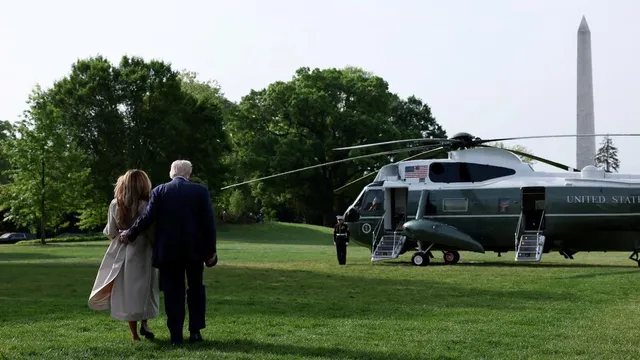
Trump attends funeral amid complex international diplomacy
2025-04-28 00:00- The funeral of Pope Francis took place in Vatican City, with over 50 heads of state attending to pay their respects.
- Donald Trump mentioned that he would attend out of respect for the late pope, who had previously disagreed with him on various issues.
- The large gathering of world leaders at the funeral underscores the intricate dynamics of international diplomacy at this time.
Express your sentiment!
Insights
In Vatican City, world leaders gathered on April 26, 2025, to pay their respects at the funeral of Pope Francis, who passed away earlier in the week due to a stroke at the age of 88. Among the attendees were U.S. President Donald Trump, accompanied by First Lady Melania Trump, and numerous dignitaries. Notably, about 250,000 mourners visited St. Peter's Basilica to bid farewell to the late pontiff, highlighting his significant impact on the global community. The public viewing at St. Peter’s Basilica had seen an overwhelming turnout, prompting the Vatican to extend its hours. By the time the coffin was sealed, more than 90,000 individuals had come to honor Pope Francis, demonstrating the deep connection he had with people from diverse backgrounds. Following an emotional farewell, the pope was laid to rest at St. Mary Major basilica. Trump's attendance at the funeral comes amidst a backdrop of international diplomatic challenges. Trump, who has had a contentious relationship with the late pontiff over differences in views, stated he would attend out of respect. Discussions related to global issues were ongoing amid the gathering of leaders, many of whom were engaged in conversations about pressing matters. Despite potential meetings with other leaders at the funeral site, Trump noted that conducting formal discussions at such an event would be disrespectful. The timing of the funeral and the presence of numerous global leaders highlighted the fragile nature of international relations, particularly in the wake of conflicts and economic discussions.
Contexts
Papal funerals have been significant events in the Catholic Church, reflecting not only the religious traditions of the institution but also the deep-rooted cultural practices surrounding death and mourning. The history of these funerals dates back to the early centuries of the Church, where the rites were simpler and more closely aligned with the deaths of local bishops and ecclesiastical leaders. As the papacy grew in prominence, so too did the complexity and ceremonial nature of papal funerals, becoming monumental events that attracted thousands of followers and dignitaries, underscoring the pope's role as a spiritual leader of the Catholic faithful and as a significant figure in global affairs. Over the years, papal funerals evolved, incorporating various liturgical elements, symbols, and traditions that conveyed the beliefs of the Church and its views on life, death, and the afterlife. One of the most notable aspects of papal funerals is the solemn liturgy that accompanies the death of a pope. Typically, these funerals include a series of rites that communicate the Church's respect for the deceased and the hope for eternal life. The body of the deceased pope is generally displayed in a manner that allows the faithful to pay their last respects, often adorned with papal regalia which symbolizes their office and mission. The structure of the funeral Mass typically follows the Rite of Christian Burial, emphasizing themes of resurrection and the communal aspect of mourning. These elements reflect the belief that the death of a pope is not only a personal loss but a communal one, followed by a period of mourning that resonates throughout the Church. Moreover, the funerals serve a dual purpose of honoring the deceased leader while also engaging the faithful and the world in a public display of mourning. The significance can be seen in the high-profile attendance from global leaders, dignitaries, and representatives from various faiths, which highlights the papacy's influence and the interconnectivity of religious and global issues. The transition from one pope to another is marked by a period of interregnum where the College of Cardinals convenes to elect a new leader. This period is steeped in both mourning and anticipation, adding to the multilayered significance of papal funerals as pivotal moments in the Church’s leadership and worldwide presence. In conclusion, the history and significance of papal funerals reveal a rich tapestry of religious tradition, cultural expression, and social interaction that extends beyond the Church's walls. They serve as profound reminders of the Church's beliefs about life and death and reinforce the communal bonds among believers. As the world observes these funerals, they also witness the enduring legacy left by the popes, underscoring their role as shepherds of the Catholic faith and their influence on global spirituality and ethics. The funerals not only commemorate the life of a pope but also signal a moment of reflection for the Church as it navigates the future in an ever-changing world.